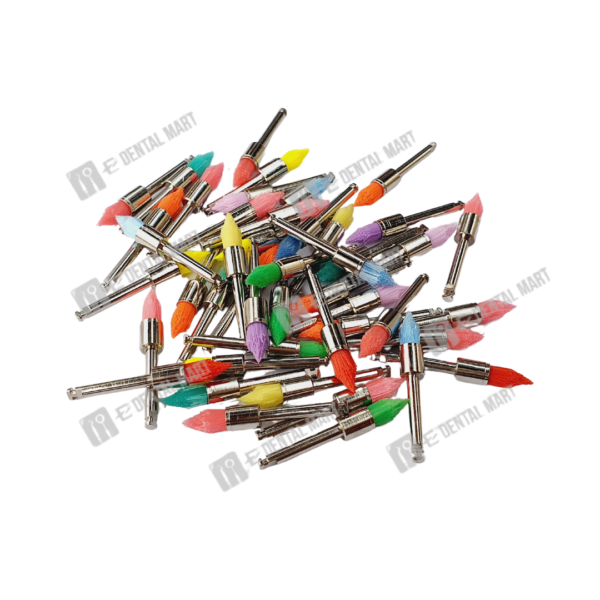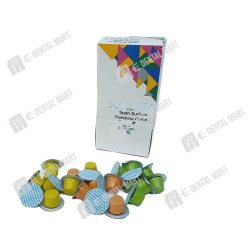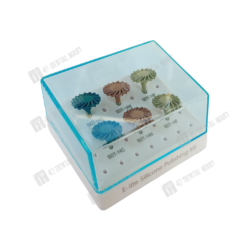Product Description
Description
- Dental polishing brushes are rotary / handpiece-driven instruments used in dentistry to polish, smooth, and provide gloss to tooth surfaces, restorations, prosthetics, or appliances. They are designed to refine surface finish after scaling, cavity preparation, composite restoration, ceramic restorations, etc.
- Brushes come in different shapes (cup, flat, tapered, pointed / pen shaped), different bristle or filament materials (nylon, natural fibers like goat hair, felt, synthetic bristles with or without abrasive particles), and sometimes impregnated with abrasives (e.g. silicon carbide, diamond, aluminium oxide). They may be disposable or reusable, sterilizable, or single-use depending on design.
- They are often used with polishing pastes / polishing compounds / polisher systems, but some brushes are abrasive themselves (embedded particles) and may reduce need for external paste.
Key Features
Here are the important features that define effectiveness, safety, and usability:
| Feature | Description / Importance |
| Bristle / Filament Material | Natural fibers (e.g. goat hair) are softer, gentle; synthetic or abrasive-embedded bristles offer more aggressive polishing and higher gloss. The material also affects durability and heat generation. |
| Impregnated Abrasives | Brushes with embedded abrasives (e.g. silicon carbide, diamond) can polish effectively even without paste; good for achieving high shine and saving time. Eg: Groovy Diamond Polishing Brushes. |
| Shape / Geometry of Brush Head | Cup shapes are good for general tooth surfaces; tapered or pointed brushes reach into grooves, fissures, interproximal zones; flat heads are good for lingual/facial surfaces. Eg: OptiShine uses concave-shaped brush for better access in interproximal / fissure areas. |
| Speed / RPM Compatibility | Some brushes are designed for slow speed, others for moderate. Using correct speed helps avoid heat damage or bristle damage. Eg: many composite polishing brushes are rated around 1,000-3,000 RPM. |
| Sterilizability / Reusability | For reusable brushes, ability to withstand autoclave or chemical sterilization without degradation is important. Eg: Groovy Brushes can be autoclaved up to 135°C. |
| Grit / Abrasiveness Level | Coarse / medium / fine / ultrafine grits allow different stages of polishing (rough correction, smoothing, final luster). The grit level affects finish and enamel/restoration safety. |
| Type (Disposable vs Reusable) | Single-use helps avoid cross-contamination; reusable ones need maintenance but cost less over time if durable. |
| Safe for Soft Tissue / Gentle to Enamel | Brush should not damage enamel, restorative margins, or soft tissue. Material, shape, and speed/pressure used all matter. |
| Versatility / Material Compatibility | Ability to be used on composites, ceramics, metals, natural tooth structure; also how it behaves on different restorative materials. |








dr agha Balochistan Madical center parinc road Quetta –
03438186164 plz send